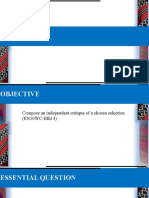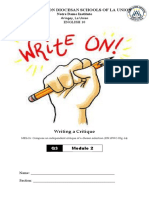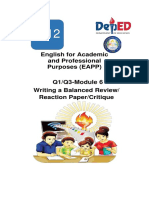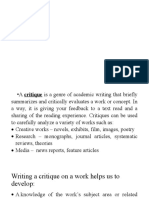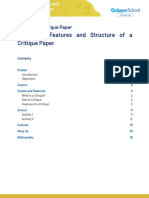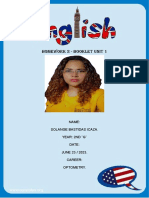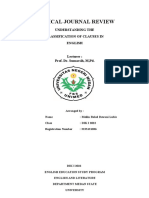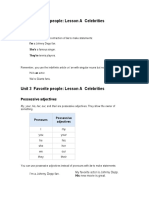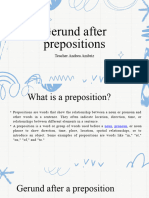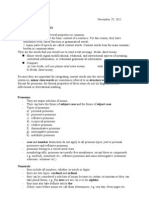0% found this document useful (0 votes)
15 views11 pagesCohesive Devices
Cohesive devices are essential tools in writing that connect ideas and ensure a logical flow between sentences and paragraphs, including repetition, synonyms, pronouns, and transitional words. Writing a critique involves summarizing and evaluating a work's strengths and weaknesses, structured with an introduction, summary, critical evaluation, conclusion, and reference list. Effective critiques require a thorough understanding of the work, systematic assessment of its elements, and evidence to support evaluations.
Uploaded by
Hayden Kasey Bernardo LinaCopyright
© © All Rights Reserved
We take content rights seriously. If you suspect this is your content, claim it here.
Available Formats
Download as DOCX, PDF, TXT or read online on Scribd
0% found this document useful (0 votes)
15 views11 pagesCohesive Devices
Cohesive devices are essential tools in writing that connect ideas and ensure a logical flow between sentences and paragraphs, including repetition, synonyms, pronouns, and transitional words. Writing a critique involves summarizing and evaluating a work's strengths and weaknesses, structured with an introduction, summary, critical evaluation, conclusion, and reference list. Effective critiques require a thorough understanding of the work, systematic assessment of its elements, and evidence to support evaluations.
Uploaded by
Hayden Kasey Bernardo LinaCopyright
© © All Rights Reserved
We take content rights seriously. If you suspect this is your content, claim it here.
Available Formats
Download as DOCX, PDF, TXT or read online on Scribd
/ 11








